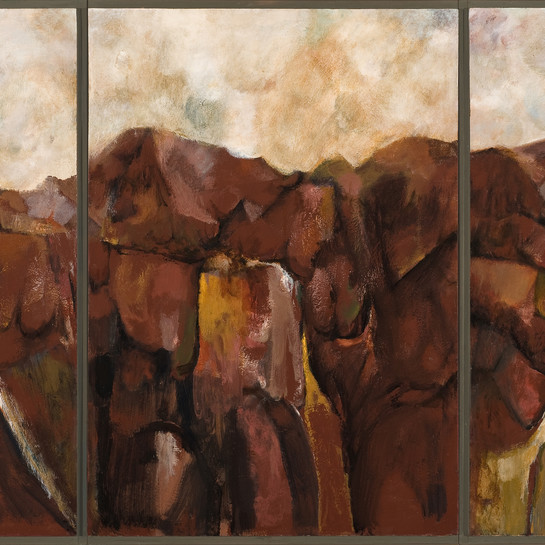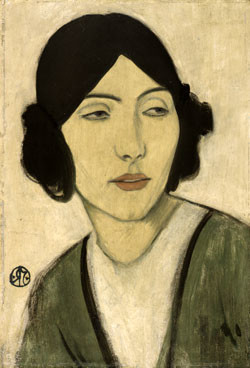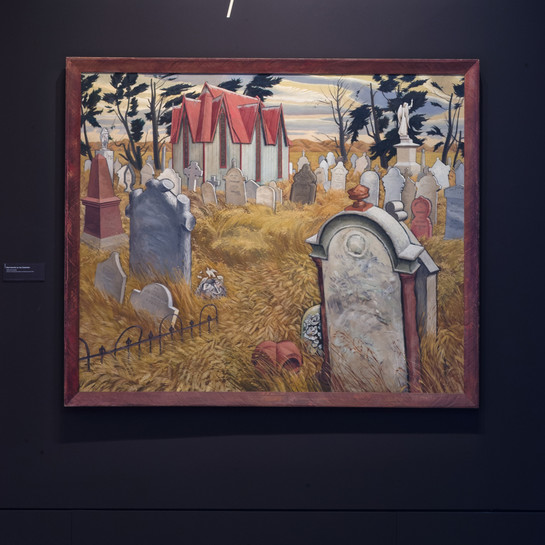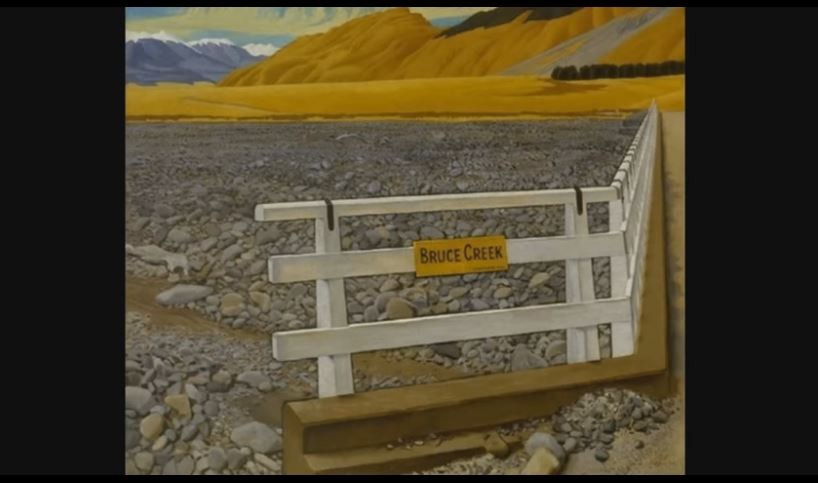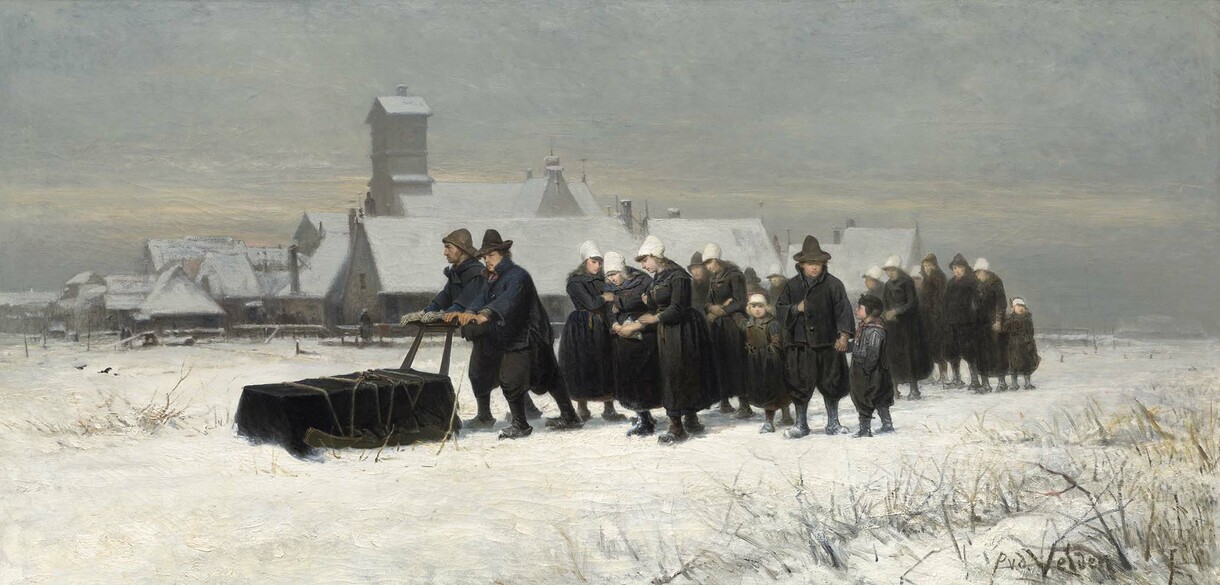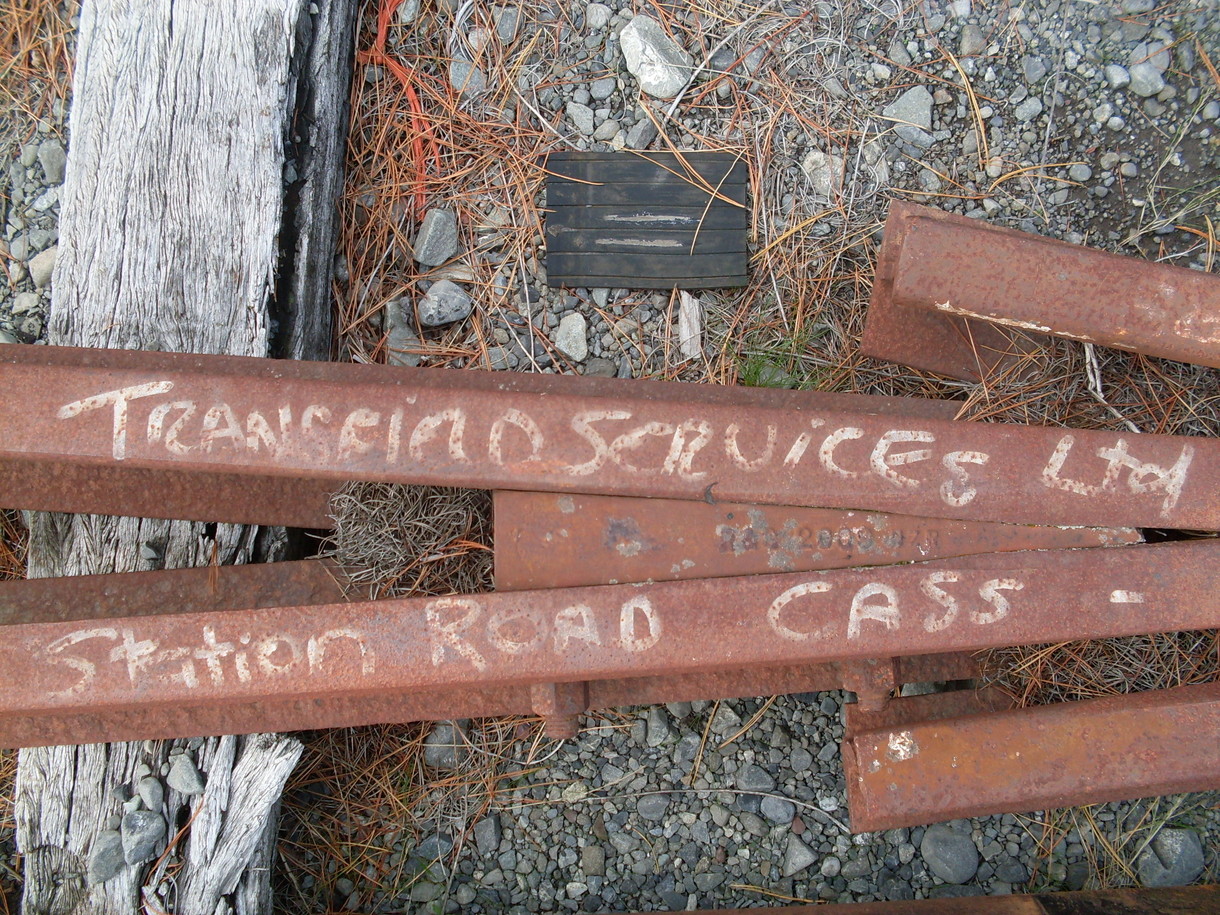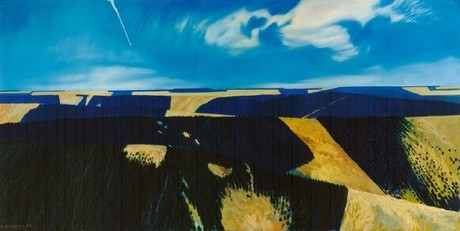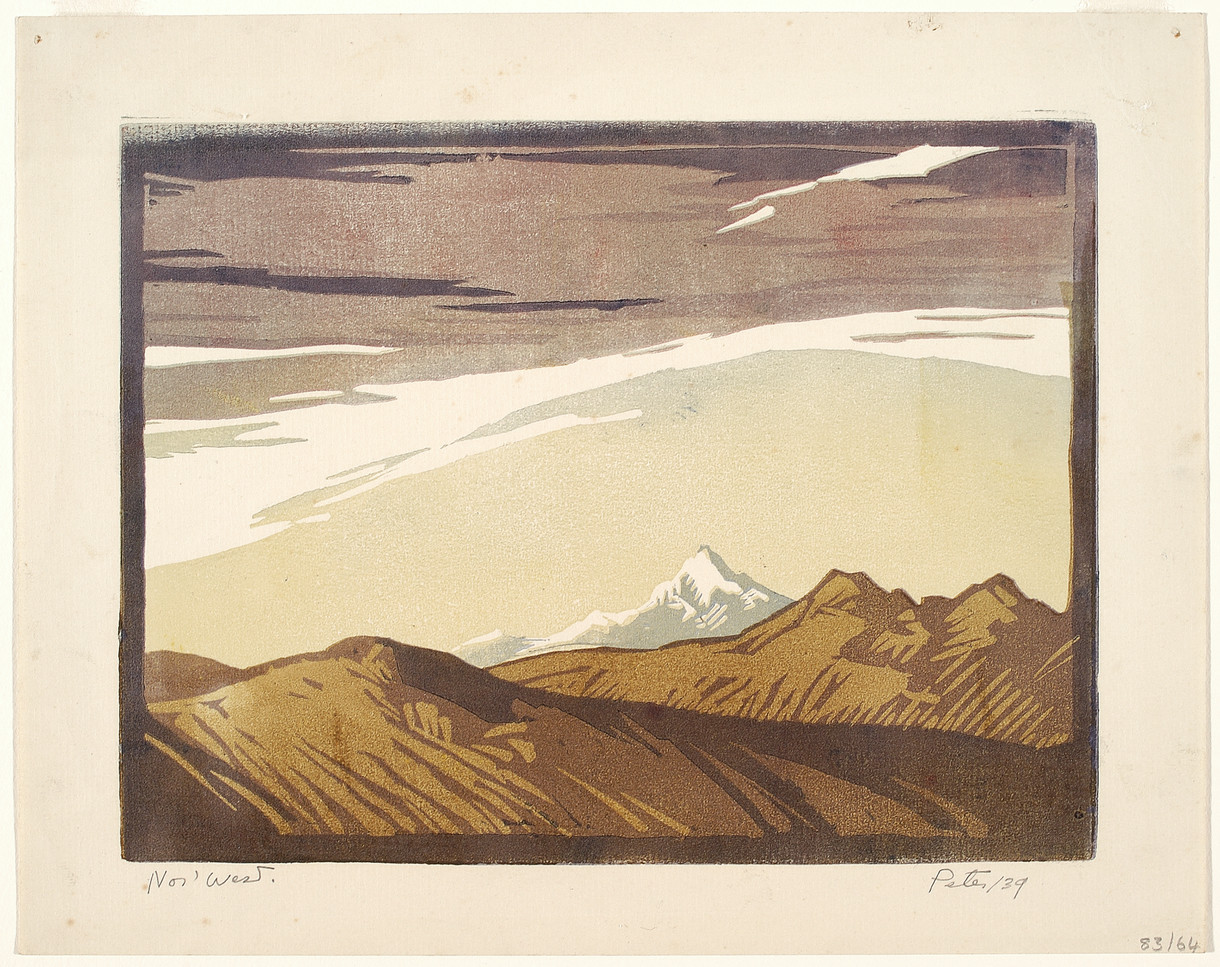Bill Sutton
Aotearoa New Zealand, b.1917, d.2000
Read more about this artist on WikipediaDry September
- 1949
- Oil on canvas
- Purchased 1973
- 667 x 794 x 55mm
- 73/247
- View on google maps
Tags: bridges (built works), landscapes (representations), natural landscapes, roads, rock, signs (declatory or advertising artifacts), snow (precipitation), trees, yellow (color)
About the artist
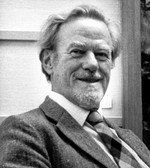
Bill Sutton began his long affiliation with the upper Waimakariri River area in his teenage years during the Great Depression, he and his elder brother Len spending several Christmases at Bealey with an aunt and uncle who had taken work there as a roadman. He later described the place getting under his skin as he and Len explored the area’s windblown tussocky hills and dry riverbeds. Soon after, in 1936, a single-lane bridge was opened on State Highway 73 across Bruce Creek, a flood-prone tributary previously crossable only by ford. Sutton returned to the region after two years’ art study and travel in London and Europe in 1947–9, bringing memory along with fresh eyes for a familiar landscape.
(From Here on the Ground, 18 May – 17 November 2024)
Exhibition History
In 1930s New Zealand there was wide discussion about what was unique about the New Zealand situation; what it was that made us different from the rest of the world. Artists and writers began exploring ways to identify our national identity. A number of artists began painting the Canterbury High Country, most famously Rita Angus and her landscape painting of the railway station at Cass. One reviewer in 1936 observed that there was a new quality in the landscapes exhibited in Christchurch that seemed ‘to consist in a removal of the romantic mists which used to obscure mountains and the Canterbury countryside generally. The light now is clear and hard, the colours are in flat planes, and the effect is of seeing the country through a gem-like atmosphere. There is also a new romantic standpoint – an insistence on the isolation and brooding loneliness of the hills.’ It’s a statement that certainly rings true with the Canterbury paintings of Rita Angus, Leo Bensemann, Louise Henderson, Rata Lovell-Smith and Bill Sutton.
(March 2018)
He Rau Maharataka Whenua: A Memory of Land, 17 September 2016 – 18 February 2017
'The Bruce is a route, it’s a river; it’s a place my grandfather, a West Coast MP, used to walk, east and west. If there was no coach, he’d go up the Bruce and down the whatever. His diary is always talking about up the Bruce or down the Bruce.' —Sir Tipene O’Regan
In the vast emptiness, 8 January - 21 August 2016
This painting is of Bruce Stream in the Bealey region on the way to Arthur’s Pass in the Southern Alps. It was a special place for Bill Sutton; he knew the landscape well, having visited it regularly in his childhood. And it was here that his ashes were scattered by his close friends after his death in 2000. He once commented:
During the Depression an uncle took a job as a roadman at Bealey and my brother and I spent several Christmases with him and Aunt Alice. This gave us an intimate acquaintance with a completely different environment from the city. We came to know the riverbed and the hills and had the occasional trip across the Waimakariri by horse and cart to Greyney’s Creek beyond Klondike Corner. [...] I have enjoyed many visits back to this area and sketched there in watercolours, with a pack of sandwiches and perhaps a couple of beers.
Brought to light, November 2009- 22 February 2011
William Sutton commented in 1987 that, ‘In Canterbury, we don’t look up or down, we look across; it is a wide view, a long landscape’. That is certainly the case in the wide sweeping view across the Waimakariri Valley from Bealey that Sutton depicts in ‘Dry September’. Sutton was drawn to this vista throughout his life; the high-country landscape, with its dried-up riverbeds, parched grasses and the distinctive cloud patterns created by its hot dry nor’west, or föhn, wind, provided a constant source of imagery.
This painting is one of the first landscapes that William Sutton completed after his return from post-war study in Britain.
His overseas experience had heightened his appreciation of the New Zealand landscape and the temporary nature of man made structures placed upon it.
In this work the bare, dry riverbed and burned dry hills stand in strong contrast to wooden bridge over Bruce Creek in west Canterbury. A work of many contrasts, Dry September was a studio painting, worked out over a period of time.
There was more concern in the intention with the composition, and its organisation than merely reflecting naturalistic appearances. In this way Sutton was able to express more effectively his understanding of the subject.
Like the work of Rita Angus, Doris Lusk and Colin McCahon, it explores the underlying structure of the land and what is imposed upon it. (Opening hang, 2003)


